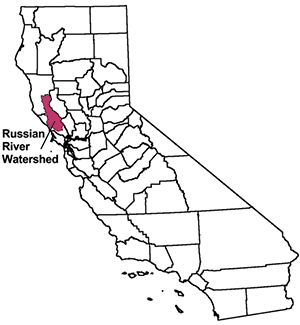Grapegrowers Enlisted to Preserve Species
Sonoma County ordinance requires vineyard owners to fund water-monitoring panel

How rules will affect vineyards
According to the new regulations, vineyard and orchard owners that use water for frost protection will be required to register with the county and pay fees to fund a new water-monitoring program intended to gauge whether grapegrowers inadvertently drive down populations of Coho and Chinook salmon in tributaries by drawing river water for frost protection. According to the California Farm Bureau Federation, about 1,700 growers have permits to divert water from the Russian River.
The amount of the proposed fee will be made public by 2 p.m. on Jan. 21 and finalized at the Jan. 25 Board of Supervisors meeting. Growers will then have from Jan. 26 until March 1 to register and pay the mandatory fees. Although the fee schedule has not been released, county officials told Wines & Vines that Russian River farmers would likely be required to pay a flat amount as well as a per-acre fee.
Ongoing participation
According to Sonoma County agricultural commissioner Cathy Neville, the ordinance also requires that property owners provide adequate access to install stream gauges or other equipment required for the program. The first water-monitoring gauges will be placed this spring. Full implementation of the project is expected to take three years; at the end, up to 100 stream gauges will monitor as many as 22 creeks.
Neville’s office already has begun conducting outreach with vineyard owners to ensure the process runs smoothly. “It’s happened so quickly,” Neville told Wines & Vines of the ordinance and subsequent regulations. She added that while online registration and fee payment will not be possible this year (growers must register in person at her Santa Rosa office), her staff is investigating that possibility for future years.
Opatz, who helped draft the regulations, said that grapegrowers will be required to submit a detailed report of their frost water use to the agriculture commissioner by July 1 each year. A panel of independent scientists will review the data along with stream gauge information, before submitting it to the State Water Resources Control Board.
State involvement
The Endangered Species Act requires the state to put regulations in place that would eliminate any risk to such populations, Opatz said. Therefore, he and others who helped draft the ordinance expect the state to enact its own frost-water regulations. They hope the county program will provide benchmark data for lawmakers.
“There are dramatic changes in activity in water rights,” Opatz said. “The state has gone from a moderate level of management to an acute level of management.”
SHARE »
CURRENT NEWS INDEX »